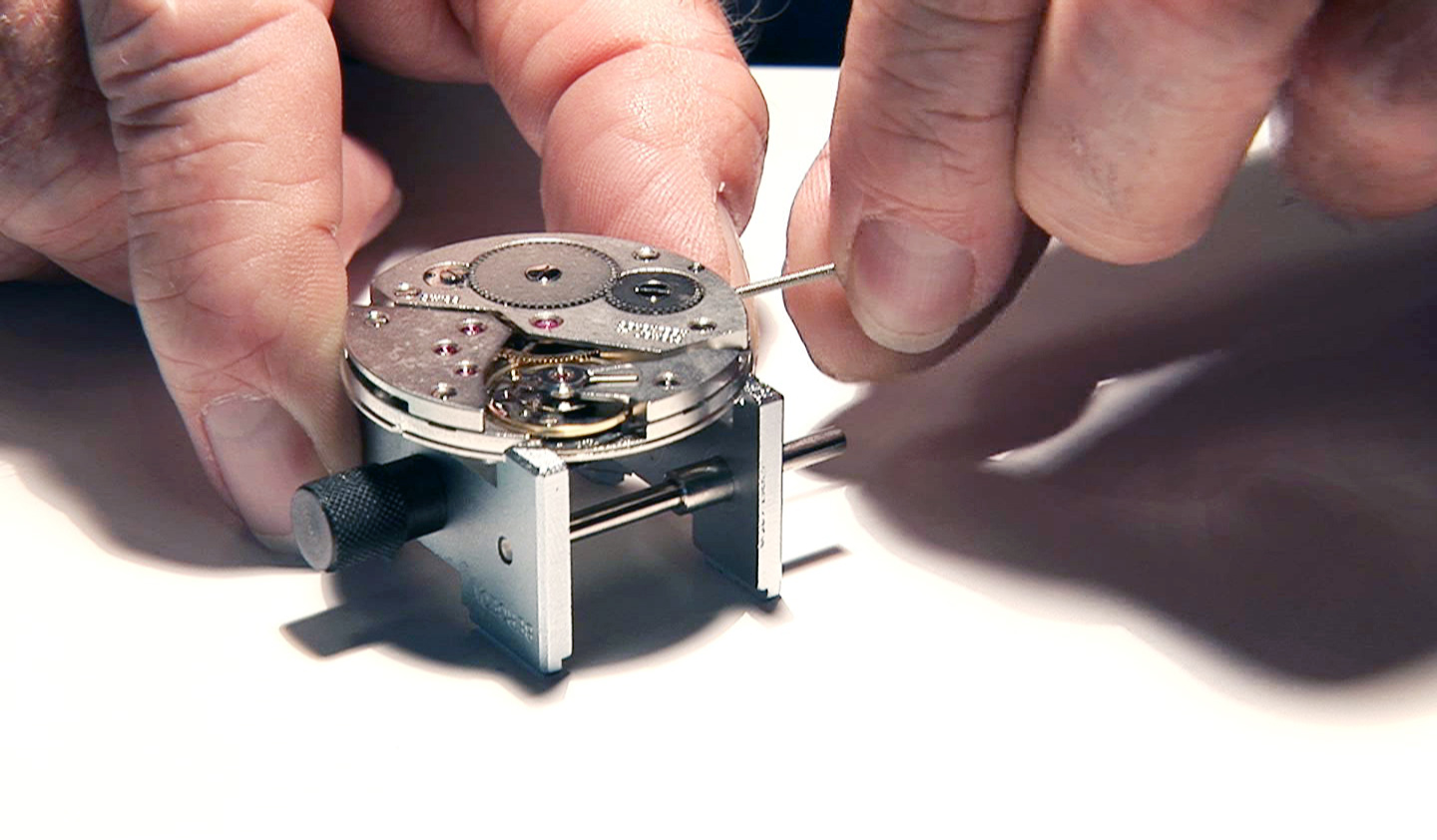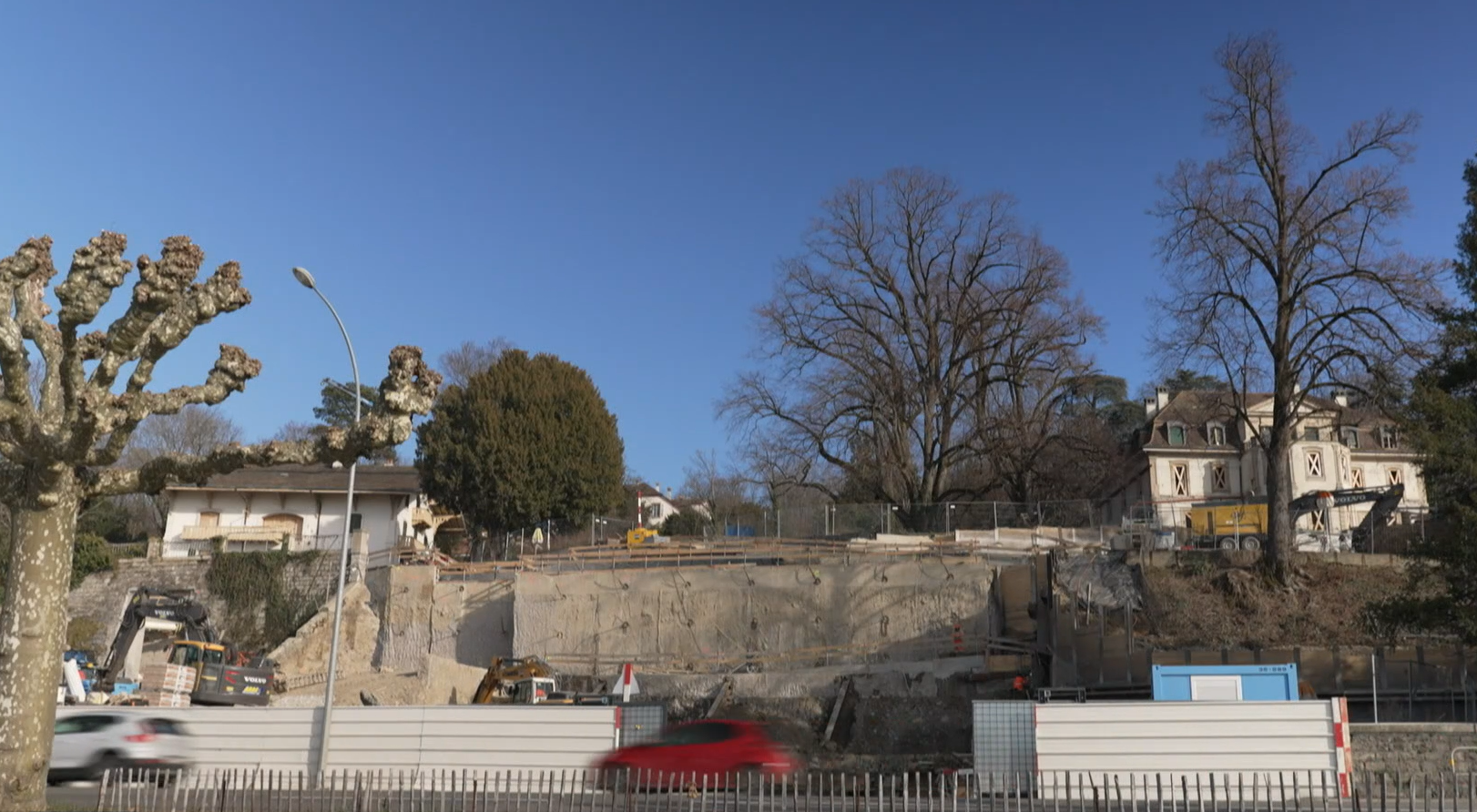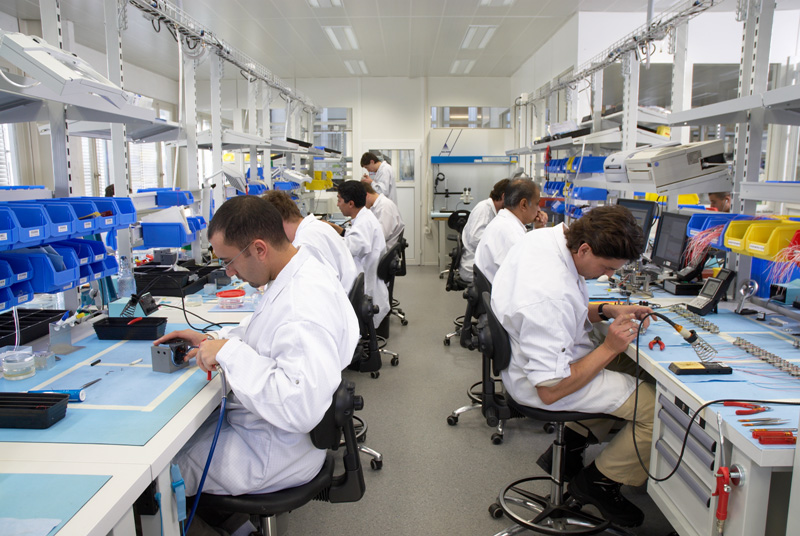Industry
In global terms Switzerland is a political lightweight, but as a trading nation the country stands among the ranks of medium-sized economies.
Editorial note: this content was current as of July 2017 and is no longer being updated.
In 2015 the World Bank ranked the size of the Swiss economy at 19th in the world, with a gross domestic product of more than $670 billion.
In the GDP per capita (PPP) rankings, the World Bank in 2015 put Switzerland at second worldwide, at more than $80,000 per person, behind only Luxembourg.
See the site of the economics ministryExternal link for more on trade relations and economic policy.
Switzerland has a long tradition of industry. It all goes back to the manufacture of clocks and watches in western Switzerland from the 18th century on. The Swiss developed an expertise in precision engineering with many applications. This has adapted to high technology. Today skilled Swiss workers are just as likely to be making robots guided by computer software.
Switzerland had its period of heavy industry, for example making locomotives for railways, but there is not much of that going on now. Like other European countries, Switzerland has made the transition from a manufacturing to a knowledge-based economy.
Pharmaceuticals
The pharmaceutical industry emerged from dye-making for textiles in the 19th century. The major players in the pharmaceutical industry today are Novartis and Roche, both based in Basel.

More
Chemical reactions
These are in fact Swiss-based multinationals, who attract a lot of their managerial and professional staffs from abroad. The Swiss pharmaceutical industry is active worldwide, with production facilities and research establishments on several continents.
Watchmaking
Swiss timepieces are generally made in small factories in the watch-making “arc jurassien” that starts in Geneva, extends through the rolling Jura hills of northwestern Switzerland and ends in the town of Schaffhausen on the River Rhine. Major watchmaking centres apart from Geneva include Neuchâtel, Biel and Grenchen.
For many decades, Swiss watches accounted for practically half of world production.

More
Taking a watch apart and putting it back together – in a tick
Although the quartz watch was actually invented in Neuchâtel, cheap Asian quartz watches almost destroyed the Swiss industry in the early 1970s. But with corporate restructuring, development of the Swatch and an unexpected comeback by the top-end mechanical watch, the industry is now profitable again.
For more on watchmaking, see the industry association siteExternal link.
SMEs
Although Switzerland has numerous major corporations, such as food giant Nestlé and Asea Brown Boveri (ABB), these firms are not really representative of the country as a manufacturing nation.
In fact, nearly all (99.6%) of all businesses in Switzerland are small and medium-sized enterprises (SMEs). These companies employ 2.27 million people, around two-thirds of all employees. Only about 750 companies have a workforce exceeding 300 people, but they account for 30% of the total workforce.
Many of these firms are engaged in the electrical and mechanical engineering field, the number one manufacturing sector in Switzerland. The majority are extremely specialised and export orientated and usually produce goods such as precision machine tools or electronic instruments which are not household names but exported to mass-producing industries all over the world.
Energy
Thanks to its topography and high levels of annual rainfall, Switzerland has ideal conditions for creating hydropower.
Towards the end of the 19th century, hydropower underwent an initial period of expansion, and between 1945 and 1970 it experienced a genuine boom. Hydropower still accounted for almost 90% of domestic electricity production at the beginning of the 1970s, but this figure fell to around 60% by 1985 following the commissioning of Switzerland’s nuclear power plants.
The hydropower market is worth around CHF2 billion and is therefore an important segment of Switzerland’s energy industry. Cross-border electricity trading is of major significance for Switzerland, both economically and in terms of supply security.
Switzerland is part of the western European power grid. In the summer it is able to export electricity, but in winter it generally has to import it. In 2016, Switzerland imported 3.9 billion kWh more than it exported.
For more on Swiss energy policy, see the site of the Federal Office of EnergyExternal link.

In compliance with the JTI standards
More: SWI swissinfo.ch certified by the Journalism Trust Initiative











You can find an overview of ongoing debates with our journalists here . Please join us!
If you want to start a conversation about a topic raised in this article or want to report factual errors, email us at english@swissinfo.ch.